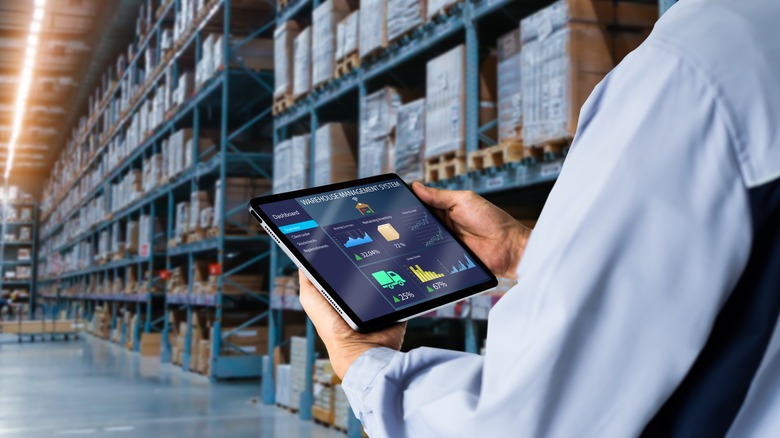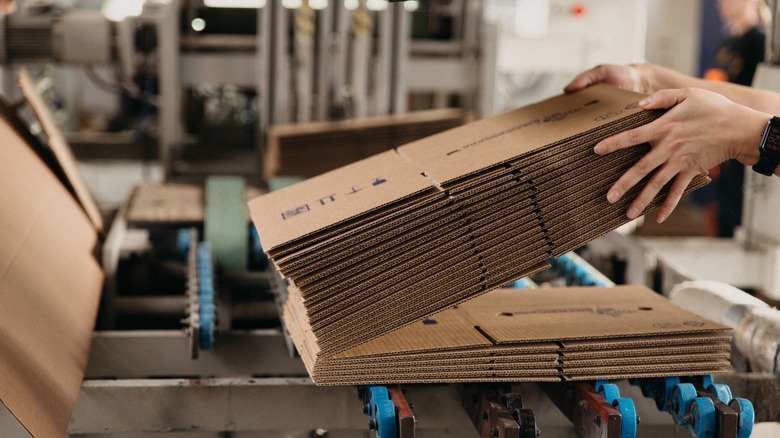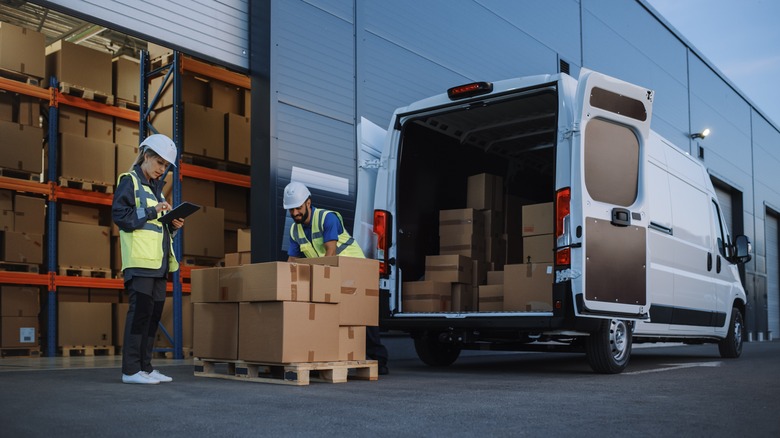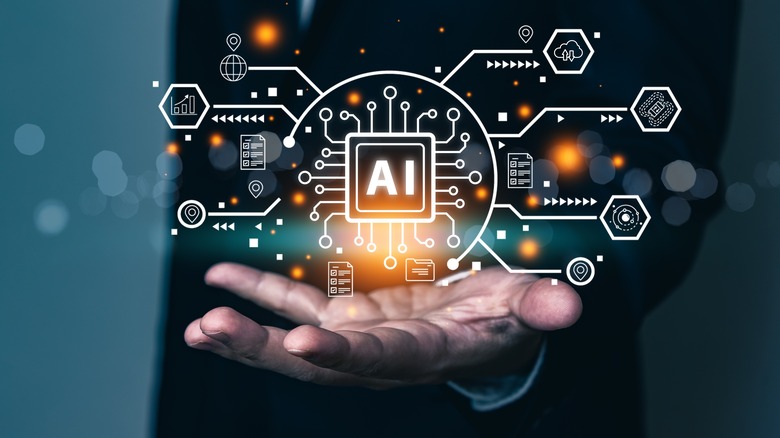Revolutionizing Logistics: How ChatGPT Integration Is Changing The Game
With its human-like responses and ability to answer a vast range of queries, ChatGPT offers users one of the most readily accessible ways to harness the power of cutting-edge AI. It and other LLMs (Large Language Models) draw on huge repositories of data to complete requests and can then generate natural-sounding replies to inform the user of its results. An increasingly large range of plugins is also available to further hone its abilities, connecting the AI bot to everything from GitHub repositories to flight booking apps.
It's safe to say that the range of potential uses for ChatGPT is huge, and in many cases, developers are still figuring out the most effective ways to apply the AI's power to their industry. This is particularly true for the logistics industry — using machine learning tools like ChatGPT has the potential to make supply chains significantly more efficient and spot potential bottlenecks before they arise. But for now, the integration process of this AI tech remains in its relatively early stages. These six areas have already been highlighted as being particularly benefited by ChatGPT integration, though there may well be further uses found as work continues on how best to harness its potential.
Responding to customer queries
ChatGPT's ability to answer questions in a natural manner makes it a great tool for responding to customer queries. This is especially useful as most queries will be focused around a narrow range of topics, making it easier to optimize its responses regarding those topics. For example, a ChatGPT-powered bot could give customers expecting a parcel from a retailer informed estimates on expected delivery time, taking into account both the location of the parcel and any anticipated delays.
Another potentially useful benefit is that a bot can accurately keep track of commonly asked questions and complaints and then provide feedback about potential solutions to its operators. However, it's worth noting that, as with any aspect of AI integration, there are limitations to what ChatGPT can do: solving more complex customer complaints is beyond its remit for now, and there has been research suggesting that over-reliance on chatbots instead of humans can reduce overall customer satisfaction and lower repeat customers.
Predicting peak demand and staffing accordingly
ChatGPT might still be inferior to humans when it comes to solving the most complex customer problems, but it's superior in other aspects. In particular, its ability to analyze vast amounts of data and pick out trends is potentially a huge advantage for logistics firms. Predicting when peak demand will occur is an ongoing challenge for any supply chain, but ChatGPT can aid that by tracking not only data from previous years but also other sources like social media to work out when demand is likely to be highest.
This can be particularly useful for warehouses that hire extra staff to cope with seasonal demand, particularly if AI analysis indicates a peak period to be arriving earlier in the year than usual. There's also potential for AI tools to help onboard and train new staff quicker, as well as provide individual recommendations and improvement strategies for existing staff.
Anticipating shipping problems
A key part of the effective running of any supply chain is responding to problems that will inevitably crop up and doing so with minimal delays. This is another area where ChatGPT could be useful: it can help ensure that every potentially affected supplier or warehouse gets access to up-to-date information and can respond accordingly. Integrating the AI into an IoT (internet of things) system would give it immediate access to information on potential problems and allow it to notify affected parties or suggest solutions to remedy the issue.
It can also be used to analyze data from shipping routes and suggest improvements to avoid problematic areas or highlight an issue with a certain part of the supply chain. It can factor in a variety of additional variables like weather, live traffic information, and the type of goods being transported to anticipate any potential issues as well as deal with existing problems.
Automating the production of documentation
By drawing on its large repository of data, ChatGPT can produce a variety of documents using minimal input data, with a human's only role being checking over the document and in case of errors. This should help reduce the time needed to generate documents overall, as well as make it easier to tailor specific documents on demand. This includes anything from simple invoices to longer, more complex contracts, although in the latter case, in particular, it's worth noting that AI generation is far from a perfect strategy.
Generating a document is one thing, but actually ensuring it contains the necessary information and is fully accurate is an entirely separate issue. Even limiting the training data to a firm's previous documentation is an imperfect strategy, as any errors contained within those existing documents will be potentially repeated as further documents are generated by the AI. There are flaws, but there's still plenty of potential for ChatGPT-generated documents to save a significant amount of time compared to existing processes.
Suggesting ways to reduce costs
As previously mentioned, using ChatGPT has the potential to cut down on customer service costs, but it can also reduce costs in a variety of other ways. By suggesting improvements to a supply chain, AI can cut down on unnecessary personnel or transport costs, and by keeping inventory at optimum levels, there's potential to save on storage costs as well.
In a recent blog post, DHL detailed how it was using AI tools to cut down packaging waste, with its OptiCarton tool figuring out the most effective ways to fill cardboard boxes with items. In turn, this added efficiency also helps the company save shipping space and cut down its carbon emissions.
A similar tool is used to find the most effective way to load its larger shipping containers. The best use of ChatGPT and similar AI tools for cost-cutting will vary between each supply chain, but it's fairly safe to say that the majority of said chains could benefit in some way from such a tool.
Aiding warehouse management
Alongside route and stock optimization, ChatGPT and similar AI tools can also potentially suggest improvements for managing individual warehouses. In a blog post, DHL details how the company has already put AI tools to use, using them to calculate the fastest way to pick up multiple orders around a warehouse and assemble them for delivery. It estimates that using the tool can cut distances by up to 50%, significantly decreasing packing times.
ChatGPT is not necessarily the most effective tool here — dedicated AI tools can be developed for specific use cases like this. However, for smaller companies that might not have the means to implement such tools, the accessibility of ChatGPT is what makes it so versatile. It democratizes access to machine learning, can be used by almost anyone, and, with the right plugin, can be trained on company-specific datasets to provide specialized solutions for smaller firms.
Current limitations
While ChatGPT is potentially a very useful tool for any logistics firm, there are plenty of limitations that stop it from being the all-in-one solution to efficiency problems, and many of those are inherent to LLMs themselves. For example, ChatGPT requires accurate data to be able to accurately solve a problem, and flawed or incomplete data can render it effectively useless. Establishing whether an AI-generated solution is going to be effective requires an understanding of the quality of the data the tool is working from, and that's something that can't be evaluated by the tool itself.
Assuming that any dataset used for AI training is flawed to some degree, there's also the issue of confidence — that is, how confident the AI itself can be in the correctness of any answer. Even basic functions like telling a customer where a parcel is can be troublesome if the AI confidently gives a wrong answer. But, on the other hand, a response along the lines of, "Sorry, I'm not sure where it is" is hardly going to reassure the customer.
Another issue for conversational AI like ChatGPT is that, even with accurate data, a human inputting the wrong prompt might generate the wrong solution to a problem. Companion tools like Prompt Perfect promise to optimize a specific prompt to get the best answer from ChatGPT, but in doing so, there's a risk that the original context is lost.
Future potential
The limitations above are just a small sample of the potential pitfalls of relying on AI tools, but even with their flaws, there's still plenty to be gained from integrating AI into logistics. Experts disagree on the degree to which ChatGPT, in particular, is useful for improving supply chains. But most share the consensus that AI use, in general, can be a net positive overall. It's also worth noting that some of the issues present in today's AI tools can be improved with further development, although not all are so readily fixable.
There has been a lot of speculation that AI could lead to huge job losses in a variety of industries, including logistics, but those fears seem mostly unfounded. It's unlikely that tools like ChatGPT will be able to replace humans in most cases. Rather, it can aid them in dealing with issues and suggest improvements to processes, and as it's further integrated into supply chains, should only become more effective at doing so.








